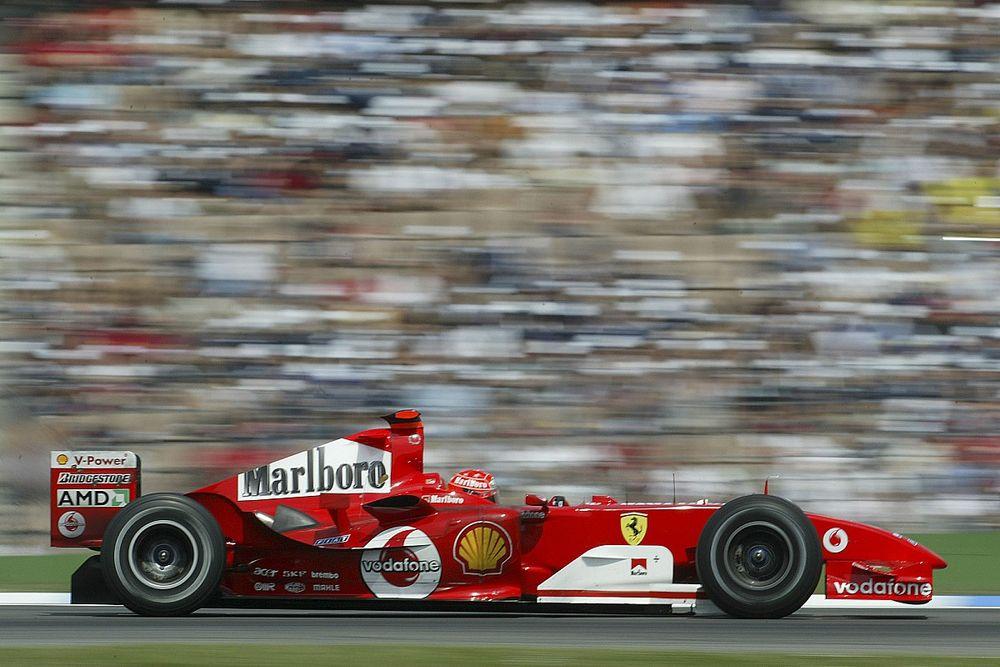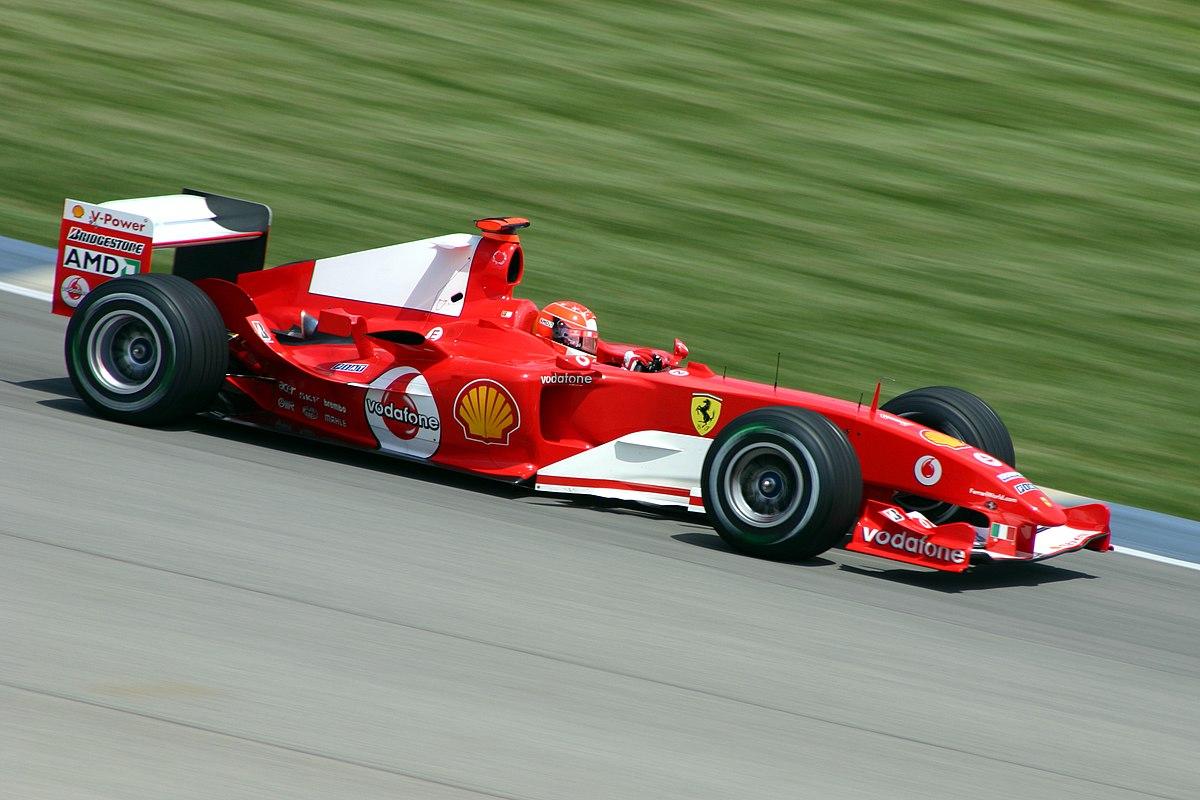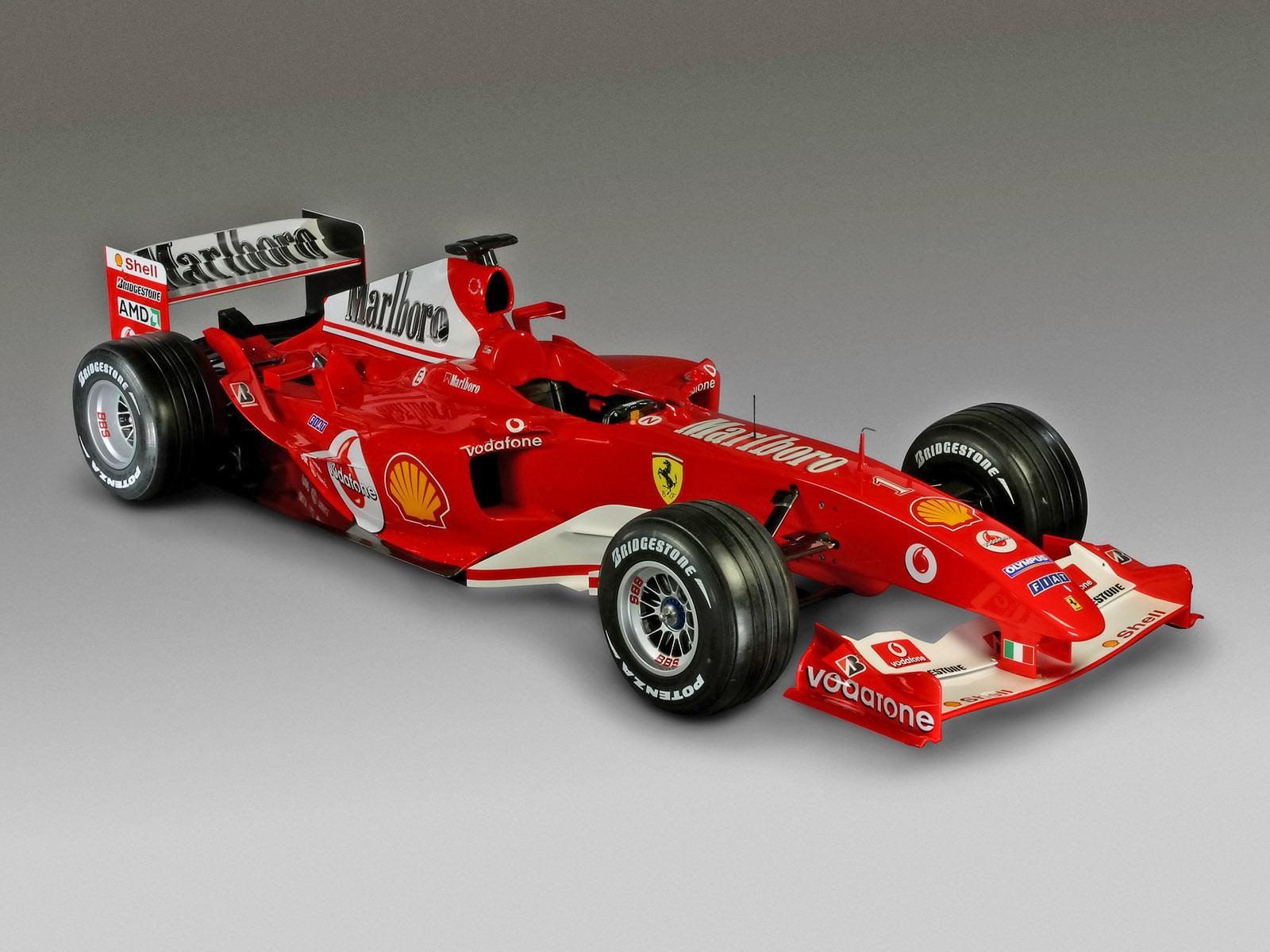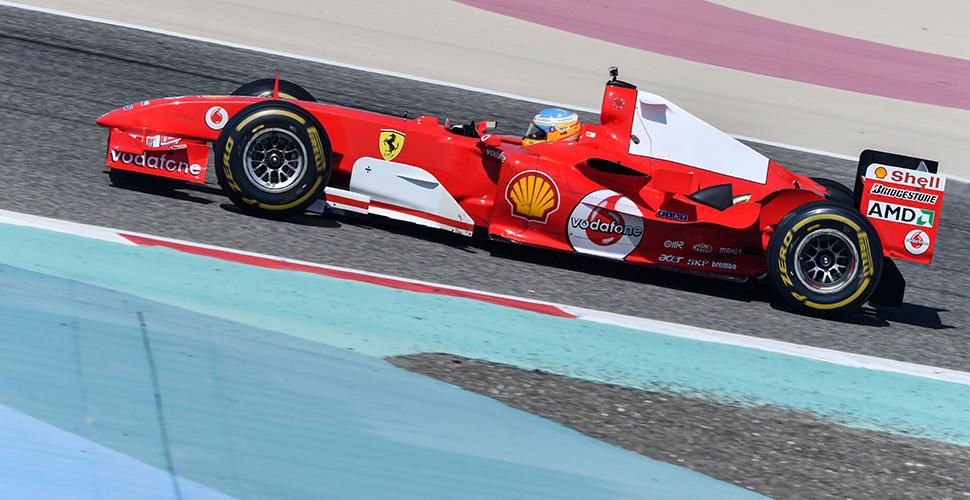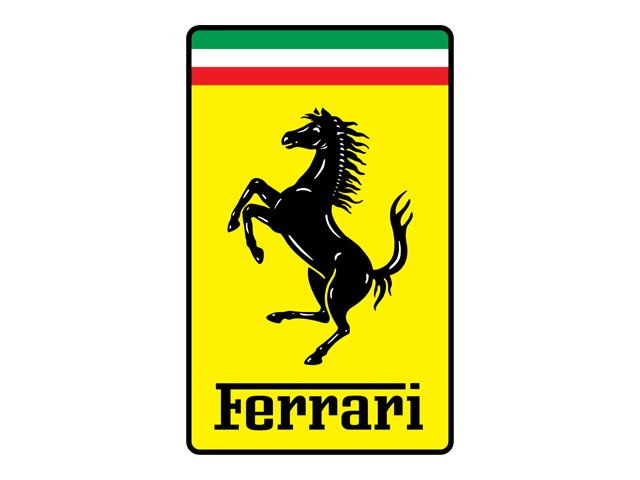None Ferrari F2004 F1
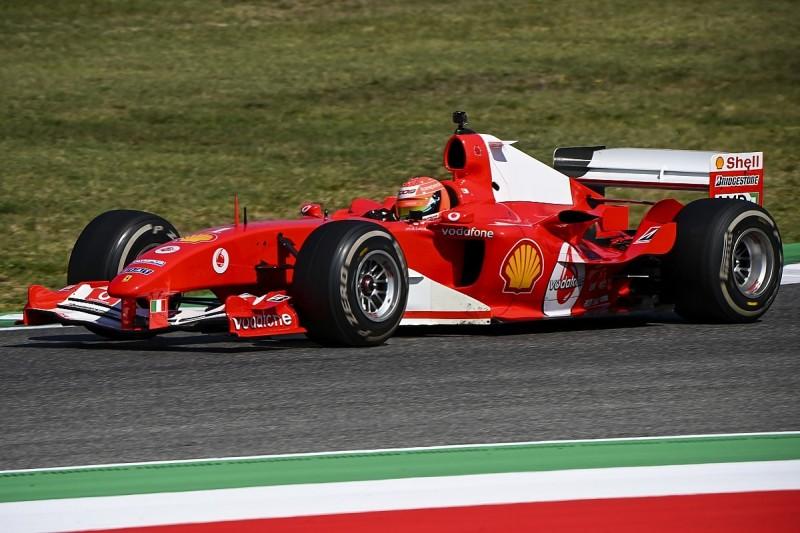
The descriptions of the Classic Cars in the Directory were partly generated or supplemented with the help of artificial intelligence (AI). The content may occasionally not always be entirely accurate or factually correct despite careful checking.
The Ferrari F2004 F1 was one of the most successful Formula One racing cars in history. Designed by Rory Byrne and Ross Brawn, it made its racing debut in 2004, and helped Ferrari to win their sixth consecutive Constructors' Championship.
The car featured a chassis made of carbon-fibre composite, with a length of 4545mm, a height of 950mm, and a width of 1800mm. The wheelbase was 3050mm, and the front track was 1470mm, while the rear track was 1410mm. The car's weight was 605kg, with a fuel capacity of 210 litres.
The F2004 F1 was powered by a 3.0 litre, 90-degree V10 engine that produced over 900 horsepower. The engine had a five-valve per cylinder system and electronic fuel injection. It was capable of revving up to 19,000 RPM. The engine was designed to be lightweight and compact, and it was one of the most powerful engines in Formula One racing at the time.
The car's transmission was a seven-speed automated gearbox with paddle shifters, which allowed drivers to change gears quickly and seamlessly. The gearbox had a magnesium casing and a differential that was electronically controlled.
The suspension of the F2004 F1 was double wishbone with pushrod-activated torsion springs on both the front and rear axles. The car's suspension setup allowed it to handle high-speed corners with ease while still offering a comfortable ride for the driver.
The brakes were carbon fibre discs and pads, with an electronic brake balance system. The car also featured an advanced aerodynamic design, with a front wing that could be adjusted on the fly to provide downforce in different parts of the track. The car's body was designed to reduce air resistance, which helped it achieve high speeds on long straightaways.
Overall, the Ferrari F2004 F1 was an incredibly advanced racing car that pushed the boundaries of technology and engineering in Formula One racing. Its precision engineering, aerodynamic design, and powerful engine helped it achieve incredible speeds and dominate the competition.
Milestones
- First race: Australian Grand Prix on March 7, 2004 - First podium finish: Malaysian Grand Prix on March 21, 2004 (Michael Schumacher finished third) - First win: Bahrain Grand Prix on April 4, 2004 (Michael Schumacher) - Dominant performance in the European Grand Prix on May 30, 2004, finishing 1-2 with Rubens Barrichello taking the victory ahead of Schumacher - Winning the Hungarian Grand Prix on August 15, 2004, giving Schumacher his 12th victory of the season and securing the driver’s championship - Winning the constructors’ championship at the Belgian Grand Prix on September 12, 2004 - Setting multiple lap records, including at the Monaco Grand Prix and the Italian Grand Prix - Finishing the 2004 season with 15 wins, 12 pole positions, and 14 fastest laps - Considered one of the most dominant cars in Formula One history, with Schumacher and Barrichello finishing first and second in the drivers’ championship and Ferrari winning the constructors’ championship by a large margin.Technical
- Chassis: carbon fiber and honeycomb composite monocoque - Weight: 605 kg (1333 lbs) - Engine: Ferrari Tipo 053, 3.0L V10 - Power: 940 hp at 19,000 RPM - Gearbox: 7-speed semi-automatic sequential - Suspension: front and rear pushrod-actuated double wishbones, torsion bar springs, and anti-roll bars - Brakes: Brembo carbon fiber disc brakes with 6-piston calipers - Tires: Bridgestone Potenza - Fuel: Shell V-Power - Wheelbase: 3050 mm (120.08 in) - Length: 4545 mm (178.94 in) - Width: 1796 mm (70.71 in) - Height: 959 mm (37.76 in) - Steering: power-assisted rack and pinion - Top speed: over 370 km/h (230 mph) - Aerodynamics: advanced wing and diffuser system for maximum downforce and minimal drag - Electronics: Ferrari-manufactured electronic control unit (ECU) for engine and gearbox management.